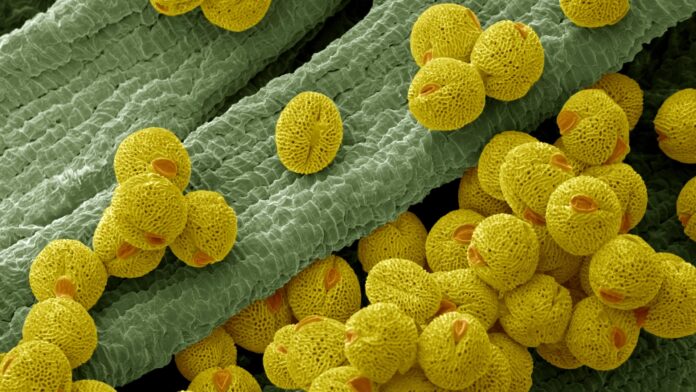"From Allergies to Innovations: How Pollen is Paving the Way for Eco-Friendly Materials"
Transforming Pollen: A Sustainable Future for Eco-Friendly Materials
At Nanyang Technological University in Singapore, a groundbreaking research initiative led by material scientist Nam-Joon Cho is redefining the potential of pollen. While many view pollen merely as an allergenic nuisance, Cho’s lab is pioneering innovative techniques to repurpose this natural material into versatile, eco-friendly products.
The Science Behind Pollen Transformation
Pollen grains, the male reproductive cells of plants, are encased in a tough outer shell made of sporopollenin, a biopolymer known for its resilience. Traditionally, this hard exterior has limited the applications of pollen in various industries. However, Cho’s team has developed a method to soften these grains, transforming them into a pliable microgel.
In a significant breakthrough reported in 2020, Cho’s team discovered that incubating pollen in an alkaline solution of potassium hydroxide at 80 degrees Celsius (176 degrees Fahrenheit) alters the surface chemistry of the grains. This treatment allows the pollen to absorb and retain water, resulting in a consistency akin to Play-Doh. This transformation opens up a myriad of possibilities for creating new materials.
Applications of Pollen Microgel
The microgel derived from pollen can be molded into various forms, including films and sponges. When dried on a flat surface, it can produce strong yet flexible paper-like materials. This innovative approach presents a sustainable alternative to traditional paper production, which is resource-intensive and often leads to deforestation. Producing paper from pollen requires minimal water and energy, making it an environmentally friendly option.
Cho’s lab has also patented the production process for this microgel, which could potentially replace conventional materials in various applications. The microgel’s unique properties allow it to respond to environmental stimuli, such as changes in pH and humidity, making it suitable for smart actuators and wearable health trackers.
Drug Delivery Innovations
Beyond material applications, the hollowed-out pollen shells present exciting opportunities in the field of medicine. Noemi Csaba, a researcher at the University of Santiago de Compostela, is exploring the use of these capsules for targeted drug delivery. By stripping away the outer coating of pollen grains, researchers can create empty capsules that can transport medications to specific areas of the body, such as the eyes, lungs, and stomach.
Sustainability and Resource Efficiency
One of the most compelling aspects of using pollen is its abundance and sustainability. For instance, a single sunflower can produce between 25,000 to 67,000 pollen grains. Unlike other biomaterials, such as chitosan or cellulose, which require the destruction of crustaceans or trees, pollen harvesting does not harm the plants or flowers. This makes it a more sustainable option for material production.
Future Prospects
While the research is promising, Cho’s team acknowledges that there are still challenges to overcome before pollen-based products can reach the market. The focus now is on predicting potential hurdles and developing sustainable solutions. The versatility of pollen as a raw material could lead to significant advancements in various sectors, from packaging to biomedical applications.
In conclusion, the innovative work being done at Nanyang Technological University highlights the untapped potential of pollen as a sustainable resource. As researchers continue to explore its applications, pollen may soon play a crucial role in the development of eco-friendly materials that benefit both industry and the environment.
